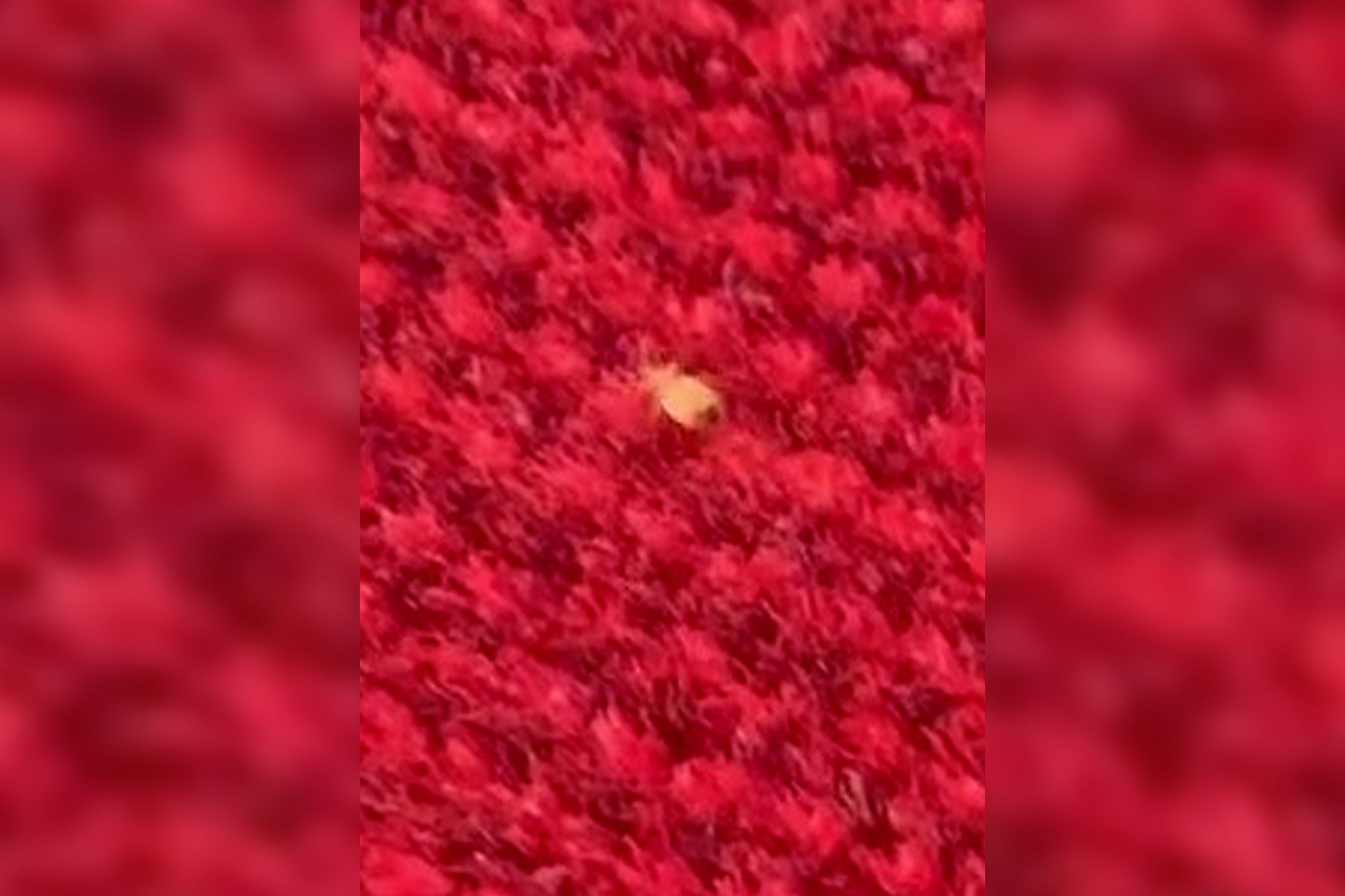
Video appears to show bed bug crawling on TTC subway seat but expert is not convinced
Another video allegedly showing a bed bug crawling on TTC seats will have you thinking twice about sitting down on future commutes — but don't panic just yet.
A somewhat blurry and shaky clip captured this past weekend and shared anonymously with blogTO alleges to show a lone bed bug crawling on the seats of a TTC subway train.
It is just the latest in a string of viral unconfirmed clips claiming to show the blood-sucking pests on Toronto transit vehicles, as edgy riders react to just about any creepy crawly on their commute as if it were a bed bug infestation.
Which begs the question: is this actually a bed bug?
Video alleges to show bed bug crawling on TTC subway seat 😳 #Toronto #TTC #Transit #BedBug #Subway - 📹 Shared with blogTO pic.twitter.com/fXXuvOhNcU
— blogTO (@blogTO) November 16, 2023
The passenger who recorded the clip tells blogTO the video was captured on Sunday, November 12, on a southbound train travelling the Yonge leg of the Line 1 Yonge-University.
"I'm definitely not sitting on the TTC anymore," the subway rider explained, saying they are instead "going to stand [and] start taking Ubers to hopefully lessen my chances of getting them."
The passenger admits that, despite the new fear of bringing home a hitchhiking bed bug, "Sometimes, TTC is the only option, though."
The video comes just days after another similar clip surfaced — which the TTC called on an entomologist to argue actually showed ladybugs and not the dreaded bed bugs other commenters suggested.
With low resolution and a shaky camera, identification is difficult, though the insect could be interpreted as having the shape, flat profile, and overall appearance of a bed bug in its nymph state.
However, Douglas Currie, the ROM's entomology curator and U of T Associate Professor, isn't too sure that's what viewers are seeing.
"I'm a bit skeptical that it's a bed bug," Currie tells blogTO, explaining that "it's not easy for bed bugs to get on trains in the first place. It's not a great environment for them."
While Currie couldn't confirm or debunk the sighting based on the limited evidence provided, he notes that "it could be any one of a number of other critters, but I just can't tell by video what it is."
While the dark spot at the back of the insect would align with a bed bug explanation, Currie notes that "one argument [for this marking] is it could have wings," which would eliminate bed bugs from the discussion.
"The video is just not clear enough for me to make a definitive call one way or the other."
Currie advises people who come across a suspected bed bug on the TTC to attempt to trap it for definitive identification, stressing that "cell phones are good for many things, but one of them is not macro photography."
But what if this actually was a true bed bug sighting?
The TTC's Stuart Green tells blogTO that the transit agency receives "approximately two reports a month from people saying they've seen bed bugs," but says that the TTC has "no way of confirming if they are actually bed bugs."
Green notes that while he'd need to defer to experts to determine what is shown in the video, the TTC has measures in place to prevent infestation of transit vehicles.
"We have daily cleaning protocols that will keep insect populations under control," he says.
"So between the cleaning and the inherently inhospitable nature of transit for these insects, experts say infestations are unlikely – although it is possible the odd bug could make its way on as part of someone's personal belongings."
Though Green is confident that a bed bug infestation on the TTC is unlikely, he says that the TTC takes "all reports of sightings seriously and will do additional cleaning and disinfecting when they are seen."
The rider in this incident did not initially report the sighting — a passive approach Green advises against.
"Our advice is that when people see what they suspect are bed bugs, they immediately report them to us, including route and four-digit vehicle number, so we can address the issue in real-time."
submitted to blogTO
Latest Videos
Latest Videos
Join the conversation Load comments







